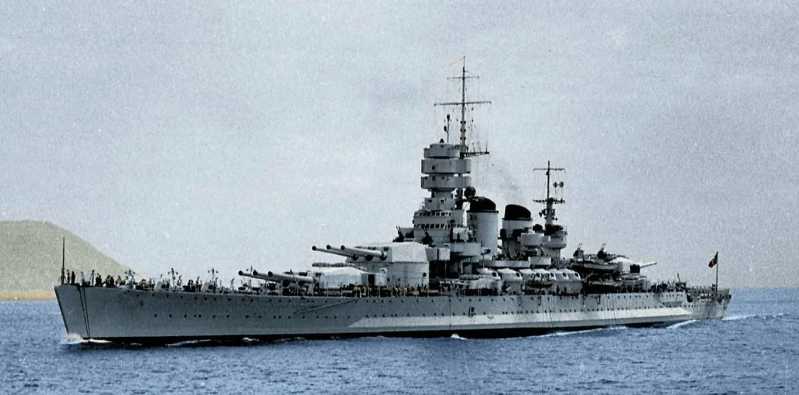In December 2023, the German Ministry of Defense announced that about one-third of the 100 billion euro special fund for the National Defense Forces established after the outbreak of the Russian-Ukrainian conflict had been spent. In 2023, Germany’s total military procurement expenditure was as high as 47 billion euros, of which 20 procurement projects were worth 24 billion euros, funded by the National Defense Forces Special Fund, and the remaining 35 projects came from the original budget. However, the German Navy felt quite lonely in this round of "big money-spending" - except for the additional purchase of several P8A "Poseidon" patrol aircraft, it can be said that it has almost nothing to gain. In the foreseeable future, it is difficult for the German Navy’s combat system to develop significantly.

Compared with its central position in economy, geography and demography, Germany’s role in European defense is not that important. The same is true for naval affairs. Although Germany’s GDP is more than twice that of Italy, its navy is only about half the size of its Mediterranean neighbors. This is partly because, by tradition and NATO’s Cold War strategy, Germany has always been a continental rather than a maritime nation. However, since the end of the Cold War and reunification, Germany has undergone a real maritime transformation. Especially under Gerhard Schröder’s thoughtful reforms at the turn of the century, Germany has been completely transformed into a major international shipping power and an open global economy. Its prosperity is more closely tied to maritime trade than any of its allies. Since 1990, as sea power has become more important to the country, the German Navy has become a very valuable tool in the country’s foreign policy. This is also reflected in the relative increase in the navy’s share of personnel and budget allocations in the traditionally army-dominated Bundeswehr over the past 30 years.
Strategic thinking behind the use and development of specific systems and technologies
When discussing Germany’s role in the world more broadly, it is important to understand how Germans think about the role of their navy. The role assigned to the navy in official strategy is comprehensive, in line with the expectations of an experienced maritime power for its naval forces. However, the Bundeswehr has never been an independent national army like its major counterparts: its units have always been fully integrated into NATO’s overall defense planning and command structure. Germany also does not have any national "General Staff" - the highest-level military planning agency that other countries have. This function has always been undertaken by NATO and the European Union’s military staff agencies, of which Germany is only a part. By deliberate post-war design, Germany must rely on the cooperation of its allies from defense to expeditionary intervention. Any overseas military deployment - except for direct self-defense or response to emergencies - must be part of a multilateral framework (such as NATO, the EU or the United Nations). Accordingly, the Favorable Navy is not designed to "act alone" to carry out the full spectrum of missions expected of other navies, whether in terms of strategic ambitions or force composition. This obviously affects related procurement plans. 33
At the same time, Germany remains skeptical about the use of military force as an element of national power, due to its postwar strategic culture and its domestic political landscape, and all military affairs are likely to be embroiled in difficult internal coalitions and cross-party debates. In this regard, the anti-interventionist tendencies in German domestic politics - even if they are not strong enough to influence policy - are particularly wary of the navy’s key role in projecting military power abroad. However, the missions performed by the German Bundeswehr over the past 30 years show that Germany does cooperate with its allies to a certain extent and deploy its forces within a multilateral framework. As an increasingly valuable tool in Germany’s evolving "new global role" after reunification, the German Navy was the first service to be deployed "out of zone" and has been making its presence felt in a wide range of missions since then.

Germany’s key strategic documents – the annual White Paper on Defense Policy (WeiRbuch) and the lower-level Guidelines on Defense Policy – clearly articulate this shift to a foreign policy tool, covering comprehensive crisis response and maritime security missions that contribute to global ocean governance. The latest White Paper 2016 also reflects NATO’s reaffirmed emphasis on the defense of European countries and territories in official German strategy after Russia’s invasion of Crimea in 2014. It is worth noting that even when the Russian-Ukrainian conflict broke out in 2022, this emphasis on the defense of European territory did not lead the German Navy to abandon crisis response or maritime security activities in more distant regions.
Systems in use and under development in the maritime domain
Since the end of the Cold War, the total number of German naval vessels has been significantly reduced, and the new crisis response mission configuration has seriously affected the design of new ships and the retention of old ships. For example, the design of the latest class of frigates just meets the type of missions that the navy has undertaken since the 1990s - low-intensity, police-like operations away from domestic supply and maintenance networks.

After 2014, as high-end warfare and deterrence of peer competitors became a priority again, the next class of frigates designed by the Navy (F126) will become an important air defense, surface warfare and anti-submarine warfare unit, with ship-to-ship, ship-to-air, ship-to-ground and anti-submarine strike capabilities (this is due to the commonality of the Lockheed Martin MK41 vertical launch system). In June 2020, the German Navy signed a contract with the Dutch Damen Shipbuilding Group, an ambitious project and the most expensive shipbuilding project in Germany’s history - to build four frigates at a price of 5.6 billion euros (with an option to build two more), and deliver them to the fleet from 2028.

As for the main weapon system, the German Navy will purchase Kongsberg’s "Navy Strike Missile" to replace the old "Harpoon" and deploy it on its F124, F125 and F126 frigates from 2023. This new missile is designed to improve stealth and range, and will bring ship-to-shore attack capabilities in addition to ship-to-ship strike capabilities. In addition, starting from the F126-class frigate, the German Navy will upgrade the widely used MLG27 "Navy Light Gun" (Rheinmetall’s multi-purpose gun system) to a more networked and versatile "4.0" version. As a new model introduced to the naval fleet, the F125’s 127mm gun will be certified for the "Volcano" long-range ammunition jointly developed by Leonardo and Diehl. The 127mm "Volcano" ammunition is already used on Italy’s "European Multipurpose Frigate" and is planned for the F126-class frigate. On the submarine side, in addition to the already confirmed DM2A4 torpedo (made by Atlas Elektronik, with a range of more than 50 kilometers) and Leonardo’s C303/S anti-torpedo jammer and decoy system, the navy is working on procuring a submarine-launched (anti-helicopter) missile. The German Navy has been wanting this so-called "Interactive Defense and Attack System for Submarines" (IDAS), which has been under development for many years. Although the special budget for the Bundeswehr announced in February initially allowed for this plan to be realized, its procurement has now been shelved (research is still continuing).
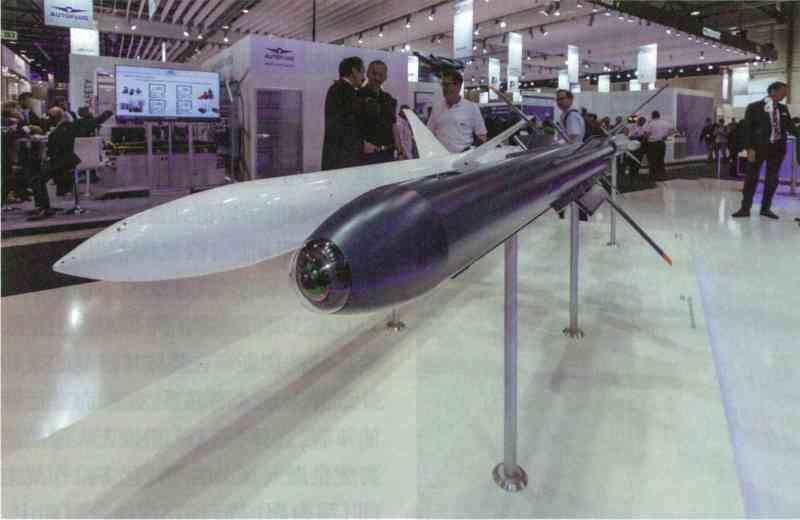
Whatever the central mission, the trend of purchasing fewer but more capable, larger and more expensive equipment has not changed. The German submarine force is a good example of this. The replacement of the old model has the ability to be deployed globally, has a much larger tonnage than its predecessor, and has fewer personnel overall. The current six Type 212A submarines have a total tonnage of almost the same as 22 of the 24 smaller submarines that entered service in 1990. This development is even more obvious in the new Type 212CD ("CD" means common design), which is built by ThyssenKrupp Marine Systems and contracted jointly with Norway - two for Germany and four for Norway. According to expectations, this 2,500-ton submarine is larger than the Type 212A.
Priority technologies and innovations
Germany generally considers its shipbuilding industry as a key national technology, especially its world-class conventional submarine manufacturing capabilities. This makes joint shipbuilding for European navies very difficult. The option of achieving economies of scale with common designs under an acceptable allocation scheme, relying on the Organization for Joint Armament Cooperation (OCCAR), has been recognized in Germany, but has yet to be implemented in the naval sector. However, the most expensive German shipbuilding contract ever - the F126 class - was awarded to a Dutch-led consortium in 2020, but all major work is being carried out in Germany.
In addition, naval weapons exports are a key factor in maintaining Germany’s state-owned maritime complex. Since the 1990s, if it were not for the high profits made on the international naval market, Germany’s remaining shipyards would have ceased operations long ago. Although the government controls export licenses, the navy usually provides the first customer, covering the research and development costs required to develop competitive products for overseas customers. The first batch of equipped ships often takes time to solve problems before they can be fully put into use. The "cost" of delay paid by the navy for this may be compensated by the international "user community" network of certain equipment, international diplomatic advantages, and a normally functioning domestic industrial base.
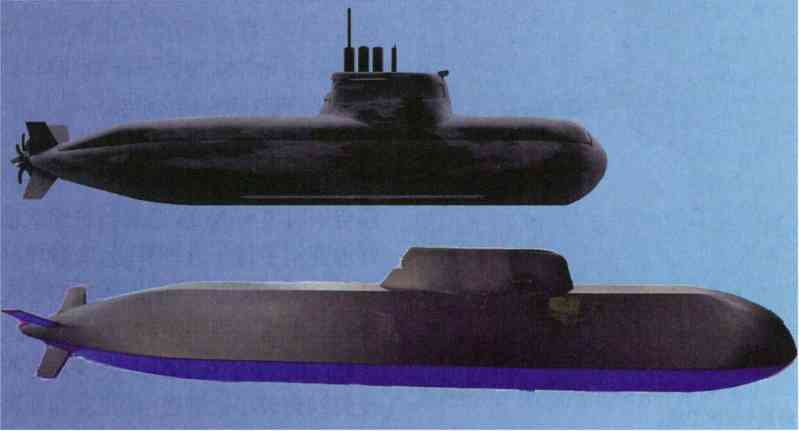
Judging from the current orders, the German Navy has no plans for significant growth in the next 10 years - at least in terms of quantity. The 100 billion euro special fund announced by German Chancellor Scholz after the outbreak of the Russian-Ukrainian conflict initially included a considerable part of the navy budget - after the air force and before the army. People talked about the option of using this special fund to purchase two more F126-class frigates, two submarines, five corvettes and seven maritime reconnaissance aircraft. However, from June 2022, everything became clear: the air force is still the biggest winner (33.4 billion euros), command capabilities and digitalization are second (20.8 billion euros), the army is again (16.6 billion euros), and the navy only gets 8.8 billion euros. In addition to the purchases already planned before February 2022, the German Navy will be content with only three additional P8A Poseidon patrol aircraft - thereby replacing the old P3 Orion aircraft, just to restore the German Navy’s capabilities to be able to fulfill its commitments to NATO.
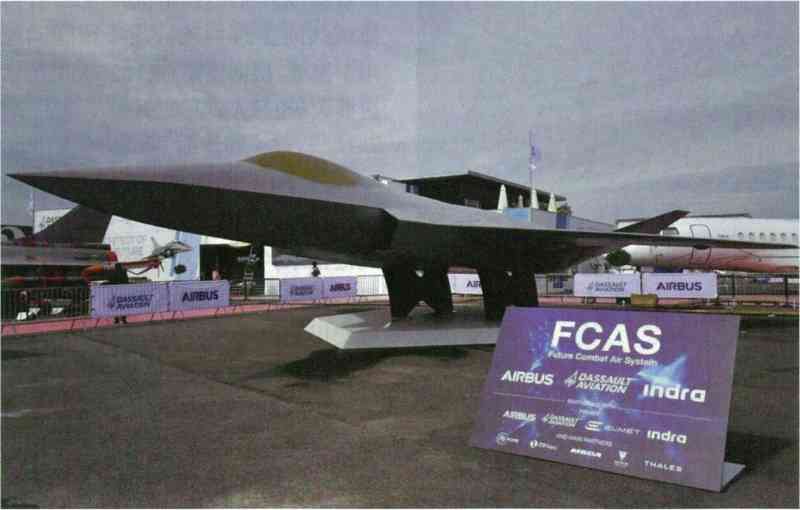
After the final revision, the German Navy not only ranked last in the special fund, but also reserved less than 1% of the special fund for research and development (including innovations in artificial intelligence). This means that as Germany’s defense priorities shift to the army and air force, the navy will remain somewhat status quo in terms of numbers, and given inflation and the need to make up for the lack of existing equipment - especially the Bundeswehr’s full stockpiling of ammunition - Germany’s defense budget in the next few years does not seem to leave much room for future technologies.
Preparation for a multi-domain approach in the naval field
Like other navies, the German Navy has struggled with the idea that "multi-domain warfare" means more than just anti-submarine warfare, surface warfare and air defense warfare. At the level of maritime operations, the connection between these forms of operations and the cyber and space dimensions is still in its infancy, but it may develop rapidly as the times necessitate. Commanders must integrate the awareness of mission-critical space-based or cyber assets into risk detection methods and protect these assets to prevent the enemy from gaining benefits through these means.
Germany’s defense bureaucracy is fragmented, and while the Luftwaffe’s European Future Combat Air System (FCAS) project is also a game-changer for the German Navy - it has no formal connection to its current procurement plans. The ships, helicopters, drones or unmanned underwater vehicles operated by the German Navy will be fully integrated into a truly modern multidimensional combat space (called the "combat cloud"). The massive amounts of data generated by multiple sensors in this space must be converted into a form that the human brain can act on or that operators can "digest", and this can only be achieved with the help of AI. The challenge is not whether to use AI, but to understand how to use it. Similarly, in situations where very fast reactions are required - hypersonic weapons or swarms of small drones come to mind immediately - the Navy must, according to scientists from the Fraunhofer Institute in Bonn, start to consider when a fully automated defense system is allowed and what the limits are.
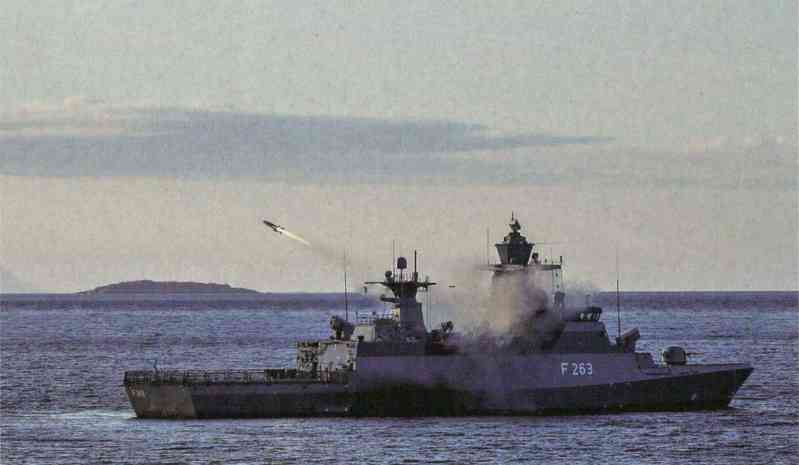
Conclusion
The importance of the German Navy in the German Federal Armed Forces has increased relatively in the crisis response missions over the past 30 years. However, judging by the latest revision of the 100 billion euro special fund, the German Air Force and Army will be given greater priority in the foreseeable future. This is obviously considering the needs brought about by the Russian-Ukrainian conflict, although Germany’s global role and interests have been recognized-playing a role internationally and protecting global interests is very dependent on the maritime level. Due to its full integration into the European Union, Germany is no longer a "continental" country, and economic globalization also relies on the ocean. Therefore, the German Navy must continue to play an important role as an instrument of German foreign policy, as evidenced by its mission record since the Cold War.

engineering, and computer science.
The German Navy’s past missions, the current status of the force, and the planned equipment already ordered indicate that there are still many limitations on how and with what types of equipment Germany can contribute to its allies and European sea power. To date, Germany still lacks naval strategic or expeditionary transport capabilities. Germany has not yet decided to make up for this Cold War deficiency, highlighting its reluctance to overemphasize the deployment of sizable army task forces overseas. Germany does not purchase or aspire to possess strategic weapons such as submarines with land strike capabilities, let alone nuclear weapons or aircraft carriers. The German Navy did not have the ability to conduct ship-to-shore missile strikes until June 2022, and during an exercise in Norway, it verified the RBS15 missiles on its light frigates.
Given the average service life of German frigates over the past few decades, this fleet may still include F125-class frigates even in 30 years, and certainly F126-class. But considering the trend of reducing personnel risks in conflicts and avoiding the concentration of more and more mission-critical equipment and equally high-value personnel on a few expensive ships, the tasks that manned warships will undertake in the future are likely to be different from those that navies are currently accustomed to. Operators who must be deployed in "hot" conflict zones rather than in police roles may be better off staying in submarines that are more concealed and better protected than exposed surface ships, controlling expendable drones and unmanned surface vessels on the spot. However, a country like Germany, in addition to maintaining reliable control over remotely or (semi-)autonomous equipment, also has an unshirkable commitment to global ocean governance and is unlikely to rely solely on "RoboCop" on the water.
















